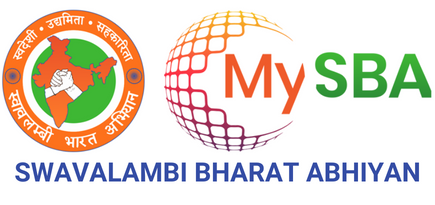A business visionary can browse many kinds of business designs to lay out the business. In India, one of the most favored business structures is the confidential restricted organization. A business enjoys many benefits when consolidated as a confidential restricted organization. We should take a gander at the confidential restricted organization benefits and impediments.
What is a Private Limited Company?
A confidential restricted organization is an organization held secretly by a gathering of people. The part’s responsibility is restricted to the offers held by them in the organization. In any case, the portions of the confidential restricted organization can’t be public.
A confidential restricted organization is a famous type of business structure in India. It very well may be enrolled with only two individuals and two chiefs. In any case, the most extreme number of individuals is 200. It is the most suggested type of business structure for a large number of little and medium organizations that are expertly overseen or family-possessed.
Segment 2(68) of the Organizations Act, 2013 characterizes a confidential restricted organization as follows:
- An organization having a base settled up share capital.
- It limits the option to move shares through its Articles of Affiliation (AOA).
- It restricts the quantity of its individuals to 200.
- It disallows the issuance of a public greeting for buying into its protections.
Minimum Requirement of a Private Limited Company
- Least of two individuals.
- Individuals can’t be counterfeit lawful elements.
- Least of two chiefs.
- At least one chief ought to be an Indian resident living in India.
- Least approved share capital of Rs.1 lakhs.
- Computerized Mark Endorsement (DSC) of the chiefs.
Registration Process of a Private Limited Company
- The course of enrollment of a confidential restricted organization is completely on the web. It ought to be enrolled by applying the SPICe+ structure on the MCA entryway. The e-MOA (Reminder of Affiliation) and e-AOA should be transferred with the SPICe+ structure. The supporters and heads of the organization should carefully sign the e-MOA and e-AOA. Consequently, the chiefs need to get the DSC prior to applying for enrollment.
- The course of enrollment of a confidential restricted organization is as per the following:
- Apply for organization name reservation To some degree An of the SPICe+ structure with two proposed names. The organization name should stick to the arrangements of the Organizations Act, 2013 for it to be supported by the Enlistment center of Organizations (ROC).
- Fill Part-B of the SPICe+ structure in something like 20 days of the name endorsement by the ROC. An organization can apply for the accompanying enlistments by filling the Part-B of the SPICe+ structure:
- Organization consolidation.
- Application for Chief Distinguishing proof Number (Racket).
- Container and TAN application.
- GSTIN application.
- EPFO and ESIC enrollment.
- Opening of an organization ledger.
- Subsequent to finishing up Section An and Part-B of the SPICe+ structure, transfer the expected reports, pay the separate expenses and present the structure.
- The ROC will analyze the application and issue the Testament of Joining.
Advantages of a Private Limited Company
No Minimum Paid-up Capital
After the correction of the Organizations Act, 2013, confidential restricted organizations don’t need a base settled up capital. It tends to be enrolled with an ostensible measure of Rs.1,00,000 approved share capital.
Separate Legal Entity
A confidential restricted organization has a lawful substance separate from its individuals. A different legitimate substance implies the law distinguishes the organization as an element with its own resources and liabilities. It can sue and be sued in its own name, for example organization name. There is a partition of the board and proprietorship. In this way, the supervisors are dependable and liable for the organization’s misfortune.
Limited Liability of Members
The individuals from the confidential restricted organization have restricted obligation. That’s what it intends on the off chance that the organization faces a misfortune, the individual resources of the individuals won’t be utilized to pay the organization’s obligations. The individuals are at risk to pay the obligations just to the degree of the amount they own towards their shareholding, for example the neglected offer worth.
Fund Raising
It is more straightforward for an organization to raise assets than a sole ownership or association firm. Private backers and financial speculators put exclusively in confidential restricted organizations or public restricted organizations.
Perpetual Existence
A confidential restricted organization has a never-ending progression, and that implies it has a proceeded or continuous presence until it is lawfully disintegrated. Since the organization is a different lawful individual, the passing of the pioneers, chiefs or individuals doesn’t influence its presence. It proceeds with its business regardless of the progressions in enrollment.
Foreign Direct Investment (FDI)
In a confidential restricted organization, 100 percent Unfamiliar Direct Speculation (FDI) is permitted, and that implies any unfamiliar individual or substance can straightforwardly put resources into the organization. FDI will help the organization develop the country over and even around the world.
Credibility
The budget summaries and fuse subtleties of a confidential restricted organization are accessible on the MCA site. This works on the organization’s believability since it makes it simple for financial backers, monetary establishments and clients to handily validate organization subtleties prior to partner with it.
Disadvantages of a Private Limited Company
Number of Members
The individuals from a confidential restricted organization are restricted. It can have a limit of 200 individuals, while a public restricted organization can have limitless individuals.
Restriction on Transfer of Shares
In a confidential restricted organization, the exchange of offers isn’t permitted under its AOA, and these offers can’t be recorded on the stock trades.
Cannot Issue Prospectus
A confidential restricted organization can’t give an outline welcoming general society to buy into its portions. The portions of the organization can’t be recorded on the stock trades.
These are the benefits and burdens of a confidential restricted organization. A business person should think about the benefits and weaknesses prior to choosing to consolidate a confidential restricted organization.
Frequently asked Questions
What is a Private Limited Company?
A private limited company is a business entity privately held by a group of individuals, limiting members' liability to the shares they hold. However, its shares cannot be publicly traded.
What are the advantages of a Private Limited Company?
Advantages include no minimum paid-up capital requirement, separate legal entity status, limited liability for members, ease of fundraising, perpetual existence, allowance for Foreign Direct Investment (FDI), and enhanced credibility due to transparent financial disclosures.
What are the disadvantages of a Private Limited Company?
Disadvantages include a limited number of members (maximum of 200), restrictions on the transfer of shares, and inability to issue a prospectus for public subscription of shares.
What are the minimum requirements for registering a Private Limited Company in India?
Minimum requirements include at least two individuals and two directors, with one director being an Indian citizen residing in India, a minimum authorized share capital of Rs. 1 lakh, and digital signature certificates (DSC) of the directors.
What is the registration process for a Private Limited Company?
The registration process is entirely online, involving steps such as applying for name reservation, filling out the SPICe+ form, obtaining various registrations, uploading necessary documents, and paying fees. The Registrar of Companies (ROC) examines the application and issues the Certificate of Incorporation upon approval.








